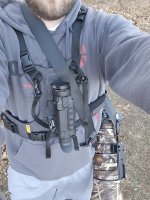nmerc_photos
Member

also I'm still trying to figure out the best way to carry the thermal with gear
if you're using small lenses (70-200 f2.8, 300 f2.8, 400 4.5, 600 6.3) the cotton carrier system works great. I put the lens foot in the main slot, and the thermal on my side
but with the bigger primes like my 400TC for example, I have been wearing a cotton carrier just for holding the thermal, and then slinging the camera across my body with a peak design sling
if anyone has better ideas, I'd love to hear it

if you're using small lenses (70-200 f2.8, 300 f2.8, 400 4.5, 600 6.3) the cotton carrier system works great. I put the lens foot in the main slot, and the thermal on my side
but with the bigger primes like my 400TC for example, I have been wearing a cotton carrier just for holding the thermal, and then slinging the camera across my body with a peak design sling
if anyone has better ideas, I'd love to hear it




